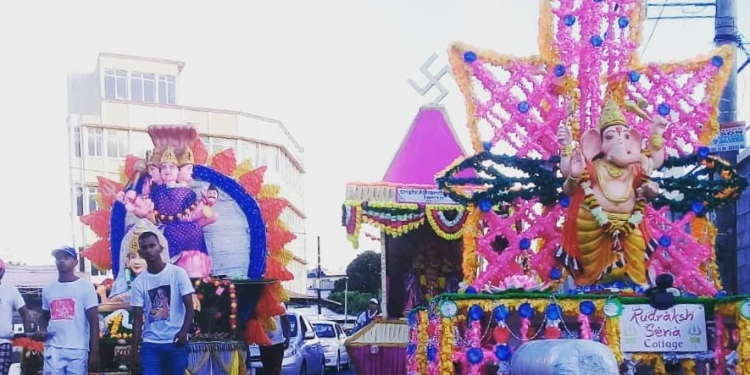It's clearly impossible to miss this unique aspect of the Mauritian culture. Thousands of Mauritians, mainly Hindus, are getting ready for their pilgrimage to the Grand Bassin. While some are going by bus or by car, many are taking the trip on foot from virtually all parts of the island, dressed in white. On reaching the Grand Bassin, they will be collecting sacred water from the lake that they will pour onto the Shiva Lingum, a sacred stone representing God Shiva, on the Great Night of Shiva that we will explain below.
The cultural and folkloric aspects of Maha Shivaratri
Maha Shivaratri is much more than a religious holiday in Mauritius. Over the years, it has had the ability to bring together pilgrims of all origins. Indeed, it's quite common to see curious tourists and expatriates with their cameras walking beside the pilgrims and thirsty for knowledge about the Mauritian culture and the country's religious aspect. But what is so special about this holiday, which is also celebrated in Rodrigues Island?
Legends say that the Grand Basin is connected to the Ganges river in India. The first pilgrims visited the Grand-Bassin, formerly called “Pari Talao” or Fairy Lake, to collect sacred water back in 1898. In 1972, however, water from the Ganges was actually poured into the lake, and this strengthened the bond between these two sacred places. Today, the Grand Bassin is much more than a simple lake surrounded by forest. Temples of different sizes and colours have been built around the lake and on its sides for several deities so that devotees can come and pray comfortably.
But Maha Shivaratree is not only about the sacred lake. It takes a bigger dimension with the pilgrimage. Hindus generally fast for 40 days before the Great Night of Shiva, which means that they only eat vegetarian food. During this period, many of them build "kanwars". These beautiful structures made of wood or bamboo in different sizes are adorned with multicoloured garlands and representations of their favourite deities. Some make their "kanwars" in the form of an elephant symbolising the God Ganesh, in the form of Shiva or that of a snake, etc. You will simply be amazed by their creativity, so don't forget to take beautiful photos!
A few days before the Great Night of Shiva, pilgrims leave their homes and head to the sacred lake, covering thousands of kilometres on foot. You might be surprised to see them departing from the north, east, west or south of the island, carrying their "kanwar" on their shoulders to the sound of religious songs and music. But you will have to be patient on the roads as the pilgrimage can lead to traffic jams in strategic places, mainly along Saint-Jean road to Vacoas and La Marie, passing through Quatre-Bornes. Roads also tend to get congested in Port Louis, the capital and other parts of the island.
Another special thing about this festival is to see the legendary Mauritian generosity. Indeed, many of them gather along the main roads leading to the Grand Bassin to offer food, such as "rotis" and "ti puri" filled with vegetarian curries, biryani, fruits, as well as water and refreshing drinks to the pilgrims. Some even erect small tents where pilgrims can rest for a while before resuming their journey to the Grand Bassin.
The Great Night of Shiva
The Great Night of Shiva will be observed on the night of March 11, which is on the 4th day of the new moon. Prayers are divided into four sessions known as "char pahar ki puja", with the first one starting around 6 pm. The last session ends early in the morning. The significance of Maha Shivaratri is that God Shiva saved the world from destruction that night. You might have seen his purple throat in depictions of Lord Shiva - it is believed that he ingested a poison arising from the depth of the ocean as the Saints (Devas) and Demons (Asuras) were looking for the nectar of immortality.
















